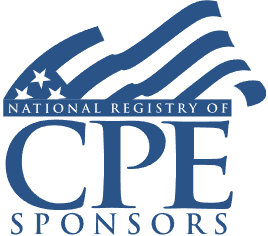Partnership Debt: Allocating Liabilities and Associated Deductions
Recourse vs. Nonrecourse Debt, Inside vs. Outside Basis, Negative Capital Accounts, and Suspended Losses

Course Details
- smart_display Format
On-Demand
- signal_cellular_alt Difficulty Level
Intermediate
- work Practice Area
Tax Preparer
- event Date
Friday, December 13, 2024
- schedule Time
1:00 p.m. ET./10:00 a.m. PT
- timer Program Length
110 minutes
-
BARBRI is a NASBA CPE sponsor and this 110-minute webinar is accredited for 2.0 CPE credits.
-
BARBRI is an IRS-approved continuing education provider offering certified courses for Enrolled Agents (EA) and Tax Return Preparers (RTRP).
This webinar will explain how partnership debt impacts basis and loss deductions for members and partners in LLCs and partnerships. Our panel of pass-through entity experts will discuss how partnership liabilities are categorized, address how debt impacts basis determinations and, hence, loss deductions for partners, and present scenarios examining situations frequently encountered by tax professionals when allocating liabilities.
Faculty

Mr. Amaya-Lainez specializes in partnership taxation with a primary focus on partnership restructurings, such as partnership mergers and acquisitions, partnership incorporations, and leveraged buy-outs. In addition, he has extensive experience serving clients that conduct business operations through partnerships, including tracking and maintaining partnership capital accounts, yearly income allocations, and assisting with estimates of tax distributions. Throughout his career, Mr. Amaya-Lainez has served clients in a wide array of industries, including healthcare, private equity, hedge funds, manufacturing, government contracting, and real estate. He is a frequent author and lecturer on partnership taxation.

Mr. Torhan is a Tax Partner in the Real Estate Services Group. He provides tax compliance and consulting services to clients in the real estate, hospitality, and financial services sectors. Mr. Torhan has extensive tax experience in a wide range of real estate transactions, including joint ventures; formation and operation of private equity funds; real estate acquisitions, dispositions, financings, and refinancings; Section 1031 like-kind exchange transactions; and Section 467 lease agreements.
Description
One of the most complicated components of partnership returns is understanding partnership liabilities and how liabilities impact a partner's share of partnership losses and outside basis. At the same time, tracking and recording partnership debt is critical to allocating losses to partners.
Partnership debts are classified as recourse, nonrecourse, and qualified nonrecourse liabilities. As defined by the Internal Revenue Code, a liability is recourse to "the extent a partner or related person bears the economic risk of loss for the liability." In contrast, a debt is nonrecourse if no partner bears a risk of economic loss. Qualified nonrecourse liabilities are liabilities that are nonrecourse but, among other requirements, secured by qualifying real estate. Qualified nonrecourse liabilities increase a partner's outside at-risk basis.
Since debt allocations increase a partner's outside basis and can similarly increase a partner's loss deduction, several problematic scenarios arise for tax practitioners. When debt exceeds the basis of property in a partnership, minimum gain can be triggered which at times requires special allocations of such debt and corresponding losses. Losses can be suspended if a partner does not have sufficient outside at-risk basis. Partnership advisers must grasp the rules concerning partnership debt allocations to report and deduct partners' losses correctly.
Listen as our authoritative panel of federal taxation experts breaks down the complexities of partnership debt allocations.
Outline
- Partnership debt: introduction
- 1001 recourse vs. 752 recourse
- 752 recourse vs. nonrecourse vs. qualified nonrecourse
- Limited liability partnerships vs. other partnerships
- GP vs. LP vs. LLP/LLC
- Recourse liabilities (1.752-2)
- Economic risk of loss (EROL) – atom bomb test
- Types of guarantees
- Bottom-dollar payment obligations
- Bad boy guarantees
- Other
- Partner or related person as lender (1.752-2(c))
- Nonrecourse liabilities
- 3 tier allocation regime (1.752-3)
- Partnership minimum gain and nonrecourse deductions
- Special rules
- No reasonable expectation of payment (1.752-2(k))
- Tiered partnerships
- Person related to more than one partner
- Timing of determination
- Basis, capital accounts & suspended losses
- Effect on basis
- Increase in partner’s share of liabilities
- Decrease in partner’s share of liabilities
- Property subject to a liability
- Netting of increases/decreases in the same transaction
- Capital account effect
- Suspended losses
- Effect on basis
Benefits
The panel will cover these and other critical issues:
- Allocating nonrecourse debt to partners
- Handling problematic issues including negative capital accounts and suspended losses
- How debt impacts partnership minimum gain and nonrecourse deductions
- Identifying arrangements frequently encountered including bottom-dollar guarantees and carveouts
NASBA Details
Learning Objectives
After completing this course, you will be able to:
- Identify common debt arrangements and guarantees including bad boy guarantees
- Recognize tips for determining and allocating debt to partners
- Ascertain differences between inside and outside debt
- Decide when partner loss deductions are suspended
- Field of Study: Taxes
- Level of Knowledge: Intermediate
- Advance Preparation: None
- Teaching Method: Seminar/Lecture
- Delivery Method: Group-Internet (via computer)
- Attendance Monitoring Method: Attendance is monitored electronically via a participant's PIN and through a series of attendance verification prompts displayed throughout the program
- Prerequisite: Three years+ business or public firm experience preparing complex tax forms and schedules, supervising other preparers or accountants. Specific knowledge and understanding of pass-through taxation, including taxation of partnerships, S corporations and their respective partners and shareholders.

Strafford Publications, Inc. is registered with the National Association of State Boards of Accountancy (NASBA) as a sponsor of continuing professional education on the National Registry of CPE Sponsors. State boards of Accountancy have final authority on the acceptance of individual courses for CPE Credits. Complaints regarding registered sponsons may be submitted to NASBA through its website: www.nasbaregistry.org.

Strafford is an IRS-approved continuing education provider offering certified courses for Enrolled Agents (EA) and Tax Return Preparers (RTRP).
Related Courses

Medicaid Asset Protection Trusts: Technical Overview and Tax Considerations
Available On-Demand

Family Partnerships: Navigating the Discounting Rules for Family-Controlled Entities
Thursday, March 6, 2025
1:00 p.m. ET./10:00 a.m. PT

Form 1041 Schedule D: Reporting Capital Gains for Trusts and Estates
Available On-Demand
Recommended Resources
How CPE Can Bridge the Gap Between What You Know and What You Need to Know
- Career Advancement